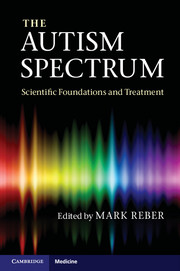Book contents
- Frontmatter
- Contents
- List of Abbreviations
- List of Contributors
- Preface
- Section 1 What We Know about Autism and How We Know It
- Section 2 Assessing and Treating Children with Autism Spectrum Disorders
- Section 3 Assessing and Treating Adults with Autism Spectrum Disorders
- Chapter 12 Diagnosis and assessment of adults with ASDs
- Chapter 13 Service and treatment planning for adults with ASDs
- Index
- Plate Section
- References
Chapter 13 - Service and treatment planning for adults with ASDs
from Section 3 - Assessing and Treating Adults with Autism Spectrum Disorders
Published online by Cambridge University Press: 05 November 2012
- Frontmatter
- Contents
- List of Abbreviations
- List of Contributors
- Preface
- Section 1 What We Know about Autism and How We Know It
- Section 2 Assessing and Treating Children with Autism Spectrum Disorders
- Section 3 Assessing and Treating Adults with Autism Spectrum Disorders
- Chapter 12 Diagnosis and assessment of adults with ASDs
- Chapter 13 Service and treatment planning for adults with ASDs
- Index
- Plate Section
- References
Summary
If you have met one person with autism, you’ve met one person with autism. The heterogeneity of autism is evident in the broad range of severity, abilities, challenges, and extraordinary talents.
Stephen M. Shore, EdD (2010)Introduction
As stated in the previous chapter, children with Autism Spectrum Disorders (ASDs) mature into adulthood. In the US, with the passage of the Individuals with Disabilities Act (IDEA) in 1975 and consolidation of several amendments in 1997, we now have a generation of individuals with autism who have participated in intensive early intervention services and special education in both specialized and integrated settings. Although IDEA legislation changed the lives of children, it did not substantially assist with the transition of services from the special education environment to the world of mainstream education, employment, and relationships. Given the three cardinal features of ASDs – impaired social interactions, impaired communication, and restricted or repetitive range of interests – the focus of this chapter will be on how these domains of impairment might best be managed in the broader ecological context of adult life. The previous chapter emphasized diagnostic considerations and a detailed assessment of strengths and vulnerabilities within an adult developmental framework. This chapter will discuss application of a comprehensive assessment to a service and treatment planning process as the final common denominator for maximizing quality of life for adults with ASDs.
- Type
- Chapter
- Information
- The Autism SpectrumScientific Foundations and Treatment, pp. 305 - 326Publisher: Cambridge University PressPrint publication year: 2012
References
- 1
- Cited by



